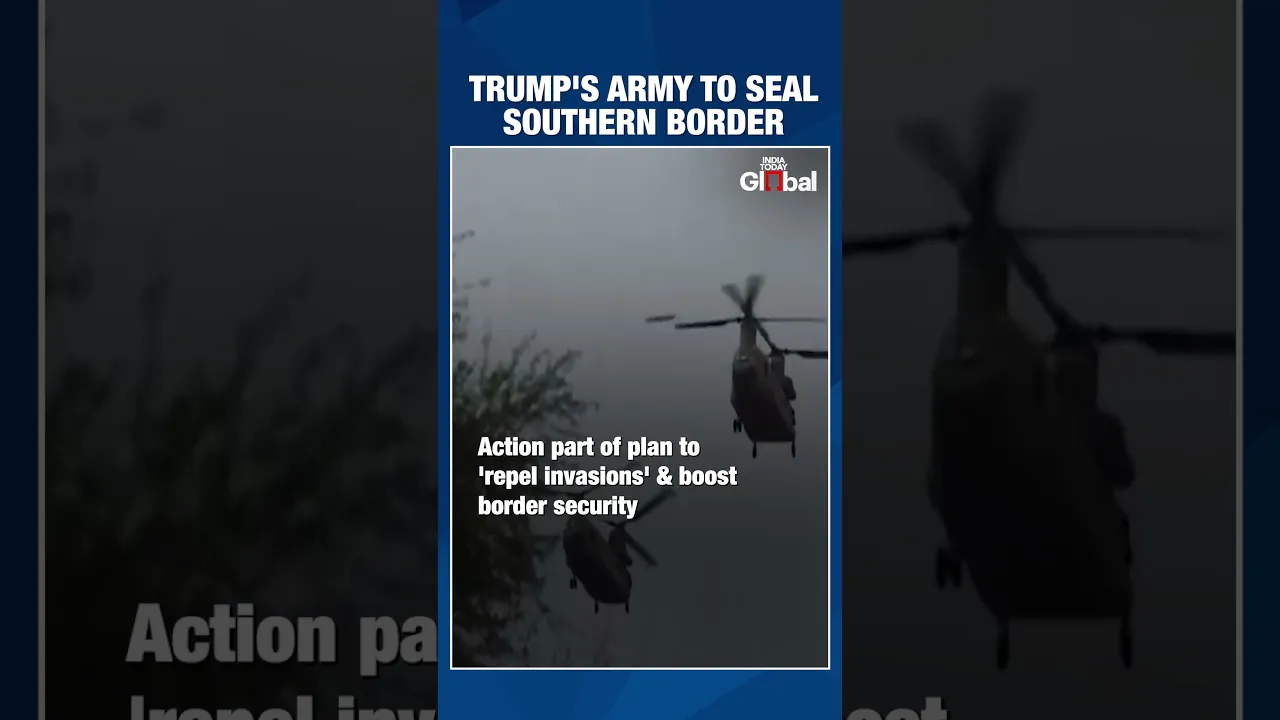President Trump has issued a far-reaching National Security Presidential Memorandum authorizing the U.S. military to take control of public lands along the southern border spanning three states. The directive grants the Pentagon unprecedented jurisdiction over the Roosevelt Reservation and other federal lands to build barriers, install surveillance systems, and potentially detain migrants. This dramatic expansion of military authority at the border represents one of the most significant shifts in U.S. immigration enforcement in decades.
Key Developments: Military Takes Command of Border Security
Unprecedented Military Authority
The presidential memorandum (NSPM-4) directs the Secretaries of Defense, Interior, Agriculture, and Homeland Security to transfer jurisdiction of federal lands along the southern border to the Department of Defense WhiteHouse.gov1. This grants the military control over a strategic strip of land spanning multiple states, excluding Federal Indian Reservations WSJ2.
"The complexity of the current situation requires that our military take a more direct role in securing our southern border than in the recent past," states the order, which justifies the action by claiming the United States is "under attack from a variety of threats" CBS News3.
Immediate Military Actions
Under the direction of Defense Secretary Pete Hegseth, the military will immediately undertake several actions:
- Construction of border barriers on newly-controlled federal lands
- Installation of detection and monitoring equipment along the border
- Phased implementation starting with limited sectors and potentially expanding based on a 45-day assessment
- Potential designation of these lands as National Defense Areas WhiteHouse.gov1
The memorandum also permits U.S. armed forces to detain immigrants accused of trespassing on these newly federally-controlled lands The Guardian4.
Global Reactions: Domestic Focus Amid International Silence
While international reactions have been notably absent from initial reporting, the domestic response has been swift and divided.
The administration has framed the action as fulfilling Trump's campaign promises on border security. The move follows his earlier declaration of a national emergency at the southern border on his first day in office, which coincided with government data showing a significant decrease in illegal crossings CBS News3.
Civil liberties advocates have raised concerns about the memorandum, which is "widely seen as a workaround of the Posse Comitatus Act—a federal law that bars U.S. military troops from participating in most civilian law enforcement actions" The Guardian4.
The administration had reportedly been planning for weeks to potentially use the Pentagon-controlled zone as a place to temporarily hold migrants, suggesting strategic coordination between various departments WSJ2.
Expert Insights: Legal and Security Questions Emerge
Constitutional and Legal Challenges
Legal experts anticipate challenges to this expansion of military authority. The memorandum's provisions allowing the military to detain immigrants on federal lands may face scrutiny under the Posse Comitatus Act, which limits military involvement in civilian law enforcement The Guardian4.
The order states it "shall be implemented consistent with applicable law and subject to the availability of appropriations," suggesting the administration anticipates potential legal obstacles WhiteHouse.gov1.
Security Rationale Questioned
While the administration cites security threats including drug trafficking as justification, official statistics indicate that 90% of convicted fentanyl traffickers are U.S. citizens, challenging the narrative that border crossers are primarily responsible for the fentanyl crisis The Guardian4.
The memorandum's authorization for the Secretary of Defense to "determine those military activities that are reasonably necessary and appropriate" provides significant discretion in implementing border security measures WhiteHouse.gov1.
Future Implications: Redefining Border Security
Short-Term Implementation Timeline
The phased implementation of this directive will begin immediately on a limited sector of federal lands designated by the Secretary of Defense. Within 45 days, the Pentagon will assess this initial phase and potentially expand operations to additional areas along the southern border WhiteHouse.gov1.
This rapid timeline suggests significant changes to border operations could be visible within weeks, including increased military presence and accelerated barrier construction.
Long-Term Structural Changes
The order represents a fundamental shift in how border security is managed in the United States, potentially establishing a permanent military presence and infrastructure along the southern border. By transforming border enforcement from primarily a law enforcement function to a military mission, the administration is recategorizing immigration as a national security issue rather than a civil or administrative matter.
The potential designation of these lands as National Defense Areas could have lasting implications for access, environmental regulations, and governance of the borderlands WhiteHouse.gov1.
Diplomatic and Human Rights Concerns
Though not directly addressed in initial reporting, the militarization of the border raises questions about U.S.-Mexico relations and international human rights standards for migration management. The detention of migrants by military personnel rather than civilian law enforcement represents a significant departure from traditional practices.
The memorandum's implementation could also affect cross-border communities, trade, and cooperation on shared issues like environmental protection and transnational crime.
Conclusion
President Trump's authorization of military control over southern border lands marks a watershed moment in U.S. immigration policy, blurring the lines between national defense and law enforcement. As implementation begins and legal challenges emerge, the key question remains: Will this unprecedented militarization of the border achieve its security objectives, or will it create new constitutional, diplomatic, and humanitarian dilemmas?

